Photo via Visual hunt
Writing a blog is important when reaching current and potential customers. But how do you come up with what to write?
Editorial Calendar
A way to organize your ideas for the present and the future.
I know what always trips me up when writing a blog is coming up with the topic to write. You might have heard that the biggest enemy of writers is that blank page. It’s true. If you’re not prepared to write you’ll push it back, again and again, until you find your big idea. The problem with that is you might never find that idea, or worse yet you think of that idea but you forget what it was when the times come to pound the keys.
Recently, I talked about the importance of using a content calendar when working with social media. Another tool you can begin to implement is the editorial calendar. This tool is important for anyone who creates content. Using an editorial calendar helps you plan out the content you will write for your blog, newsletter, or any other content you create.
What I find works best is to find one day a week you will release your blog, newsletter, videos, etc. and stick to that day. If you’re even more ambitious you can go for two or more blogs per week. To create your calendar, highlight the days you will release your content. When you decide on the days you’ll release your content all you need to do is fill those days in with topics for you to write about. We’ve used a couple of different calendars in the past to do this; if you work in WordPress there is an editorial calendar plugin you can use to plan out your posts, or you can also use Google Calendar, a hard copy calendar, or any of the planning tools out there.
Finding Your Topics
Writing what people will read.
Great, you’ve set up an editorial calendar, now all you need to do is find out what to write about for your planned posts. With an editorial calendar you can plan out your posts whenever you come up with an idea. All you need to do is place your topics on the calendar so you see what is coming up in the future for you to write. This way if you need to work on a topic in advance you know when to have the information ready.
What makes this tool great is that you can organize and reorganize your content. Say you plan out your next month of newsletters and two weeks later you are offered an interview you want to recap. For your next newsletter you can review that interview and reorganize your current week by pushing it back or just taking that topic and moving it the the end. This will keep your ideas fresh when they need to be and ensure you have topics to cover if the muse has not visited you one week.
By planning out your content you can tailor your writing to the audience that you want. Each time you write you probably learn more about your style, I know I do. You gain valuable information such as who learns from your posts but also who enjoys them. By having this in mind you can direct your topics to those who your readers both want and need.
Let The Writing Commence
The hard part is over.
Okay, after filling out your calendar you should have all the tools set up for you to write. By looking into the future you probably have articles or books you want to reference all ready. Now all you need to do is sit down and write.
Hopefully by reaching into the future you know, at least vaguely, what you will say. When I sit down to write, at least the first draft, I sit down and put everything I can think about on the page. Let out all of your information on your topic, let the words flow and the ideas sprout, let the meat and potatoes of your thoughts stew on the page. Sit and write, and don’t stop to re-word that second paragraph, or find that perfect adjective, there is time for that when you edit your work. Only after my first copy is finished do I go back and rewrite and edit my work.
In my honest opinion, there is not a formula to writing the “perfect” blog. Your blog should have some character, let your reader know you a bit more after they read your work. When you follow a formula sometimes you lose sight of what you want to convey, you’re focused more on the structure and less on the substance. While the perfect formula is not out there I do believe there are some necessities that should be included.
Substance Over Structure
It’s what you say that really matters.
Yes, every building needs a foundation but what draws people to a Frank Lloyd Wright building is what they see on the outside. Let your readers see your personality, your thoughts, let them connect with you through your words. You need to let your readers know you, after all you’re not a robot. By focusing too much on a formula you can lose the artistry, and yes even writing a blog on business is art. Take the time to focus on the artistry, you won’t be perfect that first time you write but you will learn what people like, what helps you write, and how those mold together.
There are a few things all of my blogs have in common.
1.) First the introduction. I like to introduce the reader to what they will see throughout the blog; a sort of thesis for what the blog is about.
2.) Next comes the body of the work. I like to keep my word count around 1000 words (this one’s a bit longer), and I like to divide my body into sections to break up the monotony of word after word, sentence after sentence. I use headlines to break up my sections, providing not only a hint as to what this section is about but also a little intro sentence to guide the reader.
3.) Finally a call to action of some sort usually closes out a blog. Recently, I have used a conclusion section but sometimes just a simple question or two at the end of the blog can drive engagement and spur critical thought in your reader.
Conclusion
Blogging Made Easier.
If you’ve ever been stumped writing, especially if you can’t come up with the ideas you need, creating an editorial calendar can help you keep your thoughts in order. While people today are focused more and more on the formula, the structure of blogs, remember to add the artistry to your writing. If you can’t show yourself to the reader, can you expect them to remember your writing?
Do you use an editorial calendar? What about blogging formulas?
Until next time,
Peter Wietmarschen

Leave a Reply